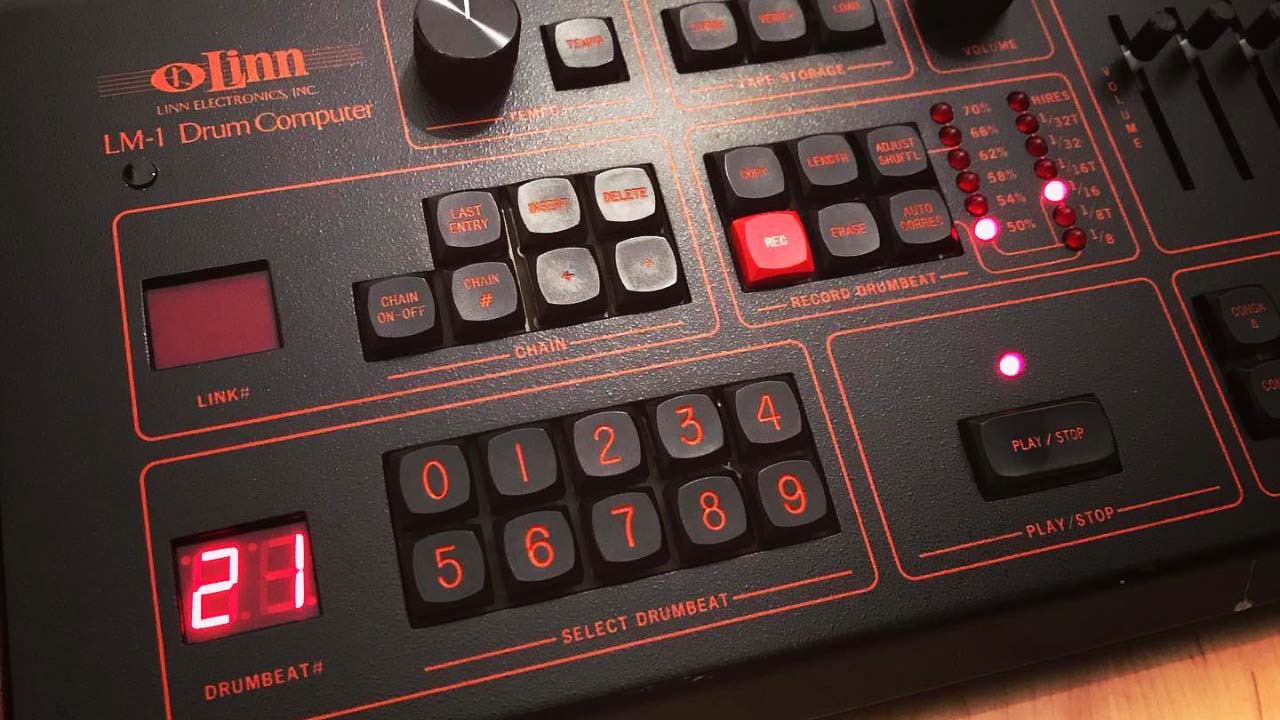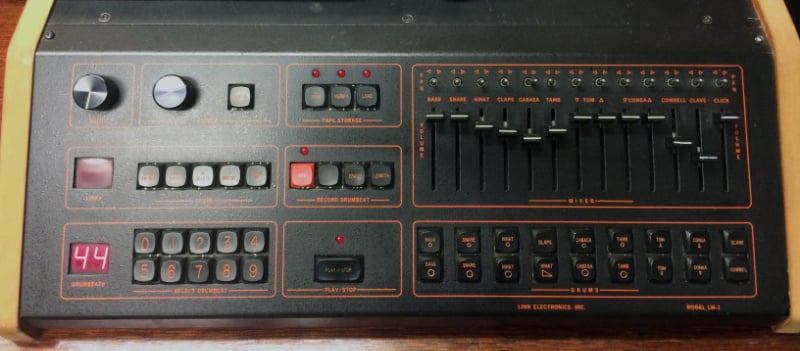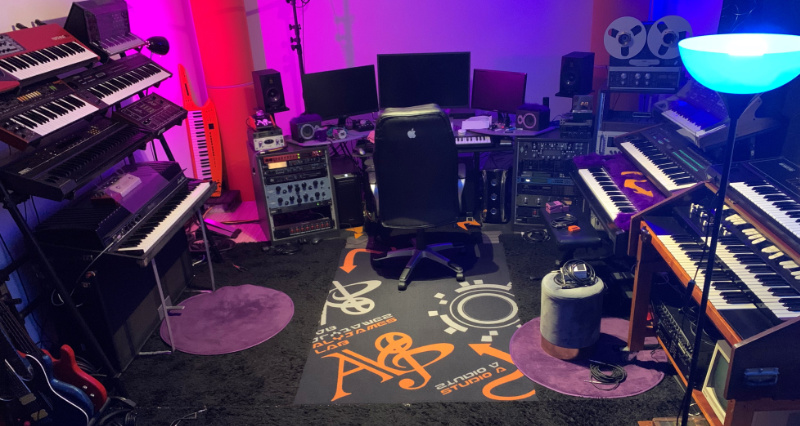
Replay: The legendary Linn LM-1 drum machine came out in 1980 and only 525 were ever made. What makes this long discontinued drum machine so unique that top producers and engineers are still using it on so many of today’s hit records?
Remember ‘Don’t You Want Me’ by The Human League? How about ‘Take On Me’ by A-ha? Micheal Jackson’s ‘Thriller’, Billy Idol’s ‘White Wedding’, Falco’s ‘Rock Me Amadeus’ to name a few. If you recall the drums all having a similarly unique sound it’s because these songs, and many others of that era, all used the Linn LM-1 drum machine, along with a string of hits by the Godfather of the LM-1 himself, Prince – the hit ‘When Doves Cry’ made famous for it’s lack of a bass line.
The LM-1 was unique as it was the first drum machine to use real drum samples. Story has it that Roger Linn shoved a drummer into his large closet (to help with damping) and had him hit a kick, snare, toms, ride, crash, rimshot, cowbell, etc, while he recorded the drum hits on relatively basic equipment. The resulting samples were stored on EPROM and with some clever electronics and musical knowhow the LM-1 was born.

The drum machine from which legends were born. The Linn LM-1.
The LM-1 sounds were played back using variable sample rate reading, which is different to how things are done today. This old method of the LM-1 created additional harmonics, especially at lower tunings and it was a specific sound that modern samplers cannot produce. The kick drum, toms and congas went through a VCF (voltage control filters), while a VCA (voltage control amp) and EPROM data looping was used on the Hi-Hat. Another vital thing to remember is that a variable sampling rate and a special decoding DA converter was used for each and every sound. These days everything runs at the speed dictated by the computers sound card setting such as 44.1 or 48 kHz for example. All these technical achievements on the original LM-1 is what made the drum patterns programmed into it sound random and realistic.
Forty years after the LM-1 was discontinued and bands like Empire Of The Sun and The Weeknd (to name but a few) are still using it on their records today – or at least samples from it in their DAW (digital audio workstation).
There are several VST versions of the LM-1 out there but they all fall short due to the fact that they simply use a sample from the original machine and being software driven they can’t recreate all the intricacies, variations and other unique sonic mysteries that came from the original machine – especially the ability to tune the drums, which, in VST, makes them sound artificial. But, there is one VST that does manage to reproduce the original LM-1 in perfect tact.

The studio of Aly James, the man behind the plugin.
AJ Lab’s VProm VST
AJ Lab’s VProm recreates the original hardware, in real time, and because VProm is effectively a modelled EPROM player it can even import original, custom, or vintage EPROMs from other drum machines of that era such as the LinnDrum and Oberheim DMX. The Legendary Bank, which can be downloaded free of charge from AJ’s website, turns the VProm VST into a drum machine that not only replicates the LM-1 to perfection, but it also turns it into an Linn LM-2, Linn 9000, Oberheim DMX and Drumtraks machine too, and they all sound amazing.
What puts VProm ahead of the competition is its unique algorithms. Because of the clever under-the-hood stuff you can can tune the drums up or down and the timbre remains true to the original just like it would if you took a drum tuning key to a regular drum head to tune it. This is why downloading free samples (from questionable sources) of the LM-1 and loading them up into your DAW is far from ideal. I feel compelled to mention that most of free samples found on the internet are often recorded through an unknown analog path with EQ and unknown preamps and, as such, they are coloured and not true the original. This is certainly the case with the KB6 samples that I tried for myself. There are some instances where so-called LM-1 samples were actually Linndrum samples or not even Linn at all.
Unlike the original hardware LM-1 there is no sampler in this VST, but given that VProm is a plugin and will be used inside your DAW it renders the original built-in sequencer redundant anyway so I can understand why Aly didn’t include it.
AJ Lab’s VProm is more than just a LM-1 VST, it’s a fully-fledged software recreation of the original LM-1 circuitry and all the unique quirks that went with it, quirks that made hit record after hit record during the 80s. Having heard an original LM-1 I can also vouch for just how accurate and authentic the VProm VST is – it’s nostalgically scary in fact.
Find out about the history of the LM-1 below.
Tags: Audio Review VST plugins

Comments